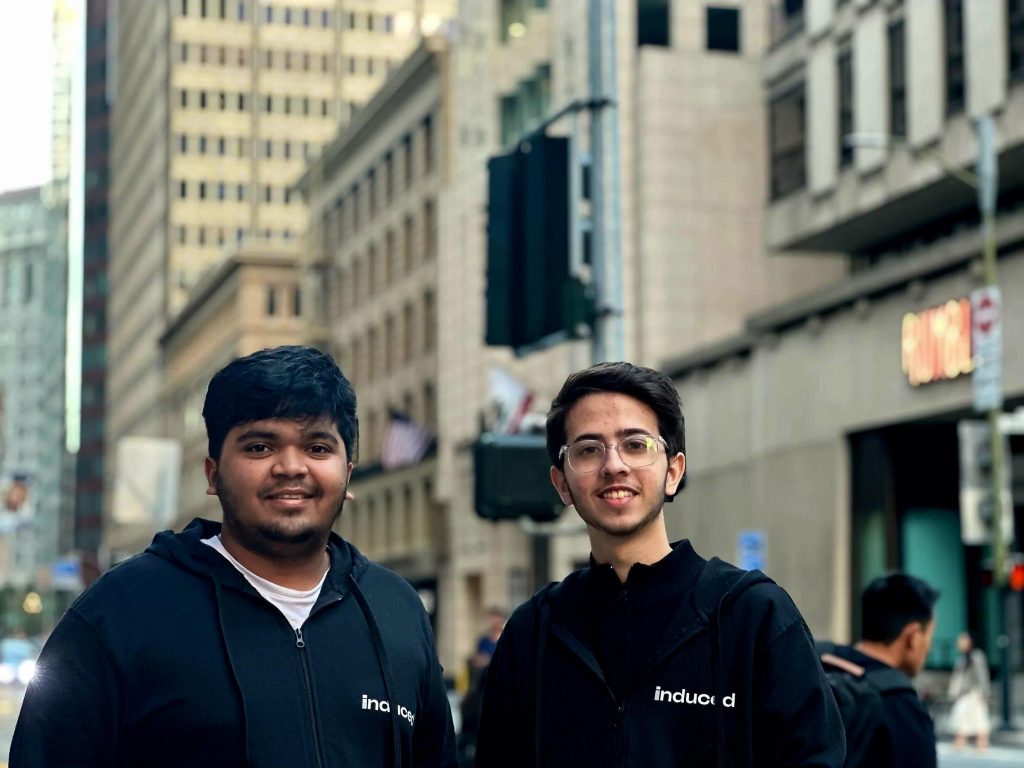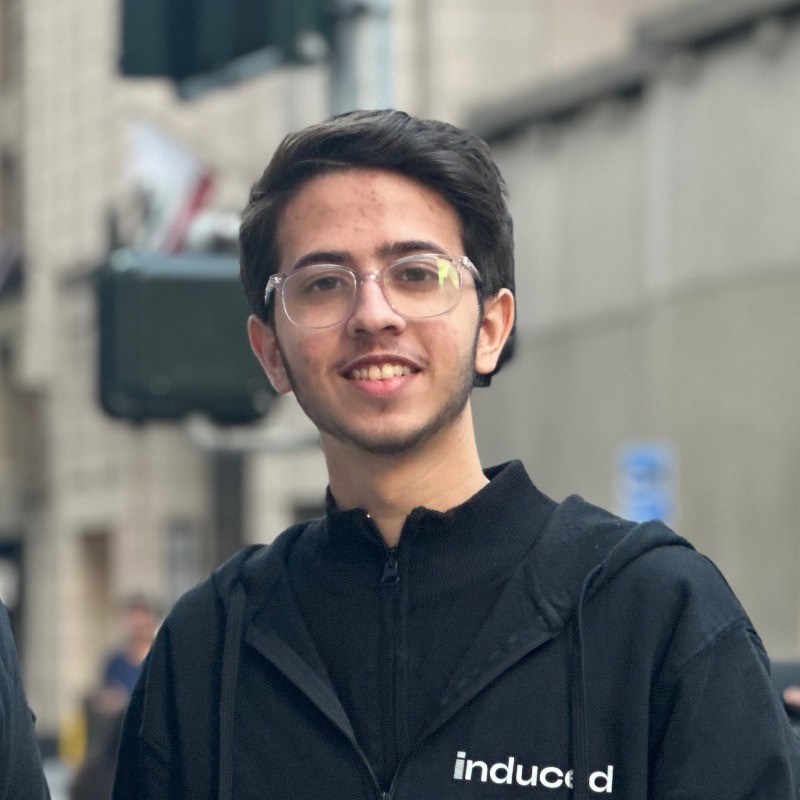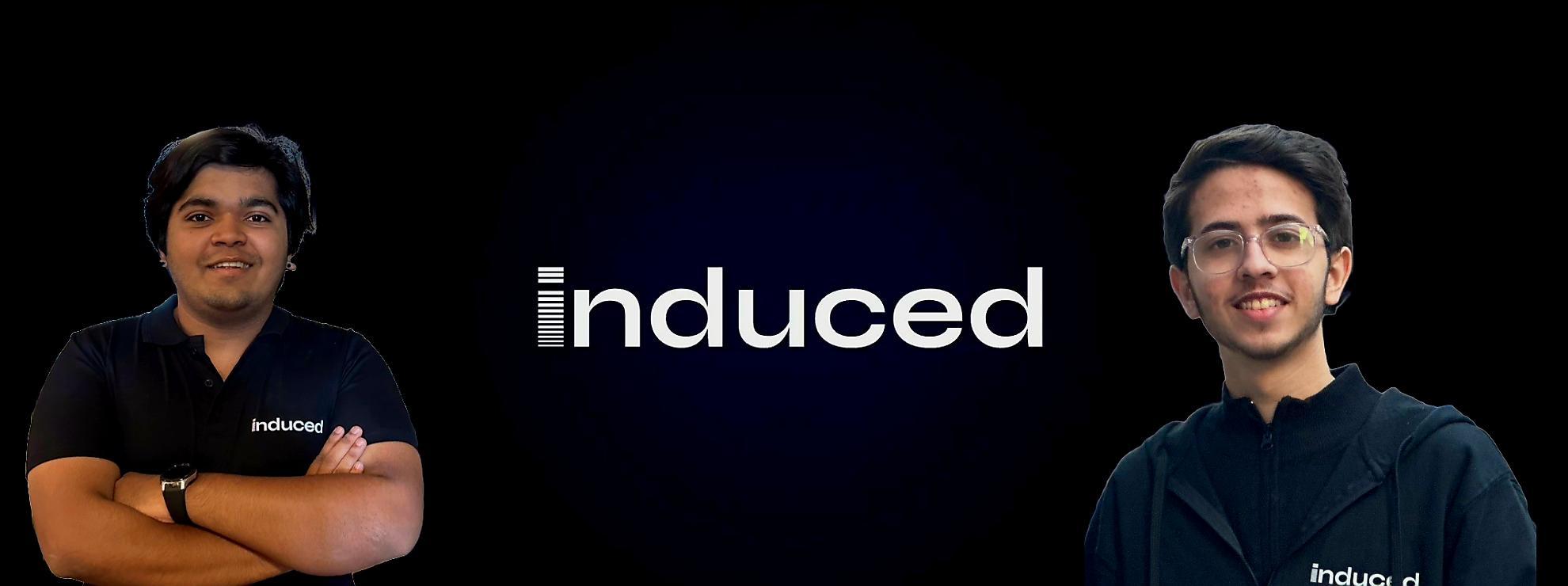(December 14, 2023) Around eight months ago, two teenagers, Aryan Sharma and Ayush Pathak were both contemplating college plans. Aryan had even received a scholarship from a foundation in the US and anyway, both the teenagers were adept coders and earning a fair bit of money. Enough money, actually to fly to San Francisco and attend conferences, where they were soon crossing paths with some of the Bay Area’s tech and VC titans. In comparison, college seemed a lacklustre option. They actually wondered if the experience might hold them back. Why not take a deep dive into entrepreneurship instead? That’s how they got to building Induced AI, which, very simply put, presents a solution for businesses to streamline their backend workflow processes using bots. Less than a year in, they have raised $2.3 million in seed funding, and count OpenAI’s Sam Altman as an investor, along with Daniel Gross and Nat Friedman.

Aryan Sharma and Ayush Pathak, the co-founders of Induced AI
The journey of a lifetime
How did the Global Indians come so far, so quickly? For starters, both Sharma and Pathak were learning coding by the time they were 13 years old. They didn’t grow up in the Bay Area or in Bangalore, although they were both based in India. “I would listen to podcasts and read about the AI and tech startup ecosystem. I started writing code very early and was doing remote work when I was still in school,” Sharma says. When he could afford it, he made another, very bold move – he bought a flight ticket to San Francisco. “I was going to a lot of events and meeting people and investors, who would eventually become part of the company.”
The Bay Area, he found, was very welcoming, even to someone as young as him – it might even have worked in his favour. “Everyone is open to taking meetings,” Sharma smiles. He discovered that ambition and hard work do pay, and age doesn’t always have to be a factor. Sharma and Pathak also decided that college was off the cards, at least for the moment, even if they could have taken their pick of institutions. Sharma, who seems more given to media appearances and interviews, says his parents were both doctors, who were concerned with his decision but decided to support him.
When they weren’t in Silicon Valley, they were writing cold-emails and sending DMs on Twitter. “I have embarrassing emails I sent out at 14,” he laughs, during an interview with Varun Mayya and Tanmay Bhat in Overpowered. “I woud say ‘I’m a big fan, I watch all your videos, do you have any advice for me’?” He recalls one response, which read, “Don’t send emails to people, that’s my advice. Go read up and start building things.” He had als interacted with Sam Altman during this three year networking period and expressed an interest in working with him, “even as his secretary.” OpenAI, he says, “had been releasing papers way before ChatGPT but Sam was too busy then with OpenAI and Helium.”
Even in 2022, though, Sharma didn’t really know how things would pan out. He was interested in a range of subjects, from AI to Space and Biotech. It was Altman who gave him advice then, saying, “This is all useful but the most high-leverage thing is AI and you will come back to this at some point.” It did in fact turn out that way. In early 2023, Sharma and Pathak teamed up to form InducedAI. Now, they are also part of AI Grant, the AI startup accelerator created by Nat Friedman and Daniel Gross. Induced AI made it into Batch 1, along with companies like Perplexity, Animato and Replicate.
How does it work?
Induced AI helps businesses automate repetitive tasks typically handled by admin back offices. Users input workflows in English (known as a text workflow), which the AI then converts into pseudo-code for automation. The platform uses bots, each equipped with its own email and phone number for handling tasks like verification processes, including OTPs and other forms of authorization. These bots run on the cloud, ensuring full access without affecting the user’s computer. “Say, a company has a 15-member team spending a lot of time on tasks like form filling or data entry, which could typically be outsourced to a backoffice,” Sharma explained.
All this works on Chromium-based browsers (like Google Chrome, Microsoft Edge, Brave, etc.). And none of the work being done is actually visible to the user – for instance, if the bot is running a search operation, the user will not see a search bar with keywords being typed in. Induced AI has modified the browser’s rendering engine, which usually turns website code into what you see on your screen, to work better for background tasks. They’ve tweaked how the browser responds to changes on websites and improved the way it communicates internally and with other systems.
“We control the browser layers remotely, which leads to more reliability compared to running as an extension,” Sharma explains. “By controlling the browser, we also control everything that Chrome has access to.” This enhanced control allows for more consistent and dependable automation processes.
For example, consider a task like searching for shoes on Google. Induced AI breaks this task into “chunks,” then performs ‘inference’ to determine the necessary steps at each stage. The user just needs to provide the overall task description. Once the steps are outlined, the system autonomously executes the process, from opening the browser to carrying out the search. To the end user, it’s akin to giving a command to Alexa to “play my favorite playlist,” where Alexa autonomously locates and plays the playlist.


Aryan Sharma
RPA tech
However, Induced AI is tailored for back-office tasks, enhancing business workflows’ cost-effectiveness and efficiency. It uses a ‘headless’ browser operation, meaning the browser works in the background without displaying web pages on a screen. It navigates and interacts with websites, but invisibly. “It’s not meant to book a flight ticket or write an email,” Sharma says. “It’s designed for specific processes and tasks, like generating leads at 9 am every day, or collating insurance claims.
This is done through RPA (Robotic Process Automation), which usses ‘bots’ to automate repetitive and rule-based tasks within business processes. They emulate human actions and interactions within digital systems, applications and data and can carry out certain tasks as a human user would, following a set of predefined rules and logic. An added advantage is that it is non invasive and easily deployable along with being scalable and flexible.
The path ahead
Aryan now spends much more time in the Bay Area and Induced AI has signed up a handful of small to mid-sized customers, he told Tech Crunch.
“Induced is the definition of RPA 3.0,” said investor SignalFire in a statement. “Not only are they taking a huge leap forward in providing true human-like interaction and efficiency, they democratize access by allowing users to describe their workflows in natural language and execute parallel agents any back-office workflow.
- Follow Aryan Sharma and Ayush Pathak on LinkedIn.




